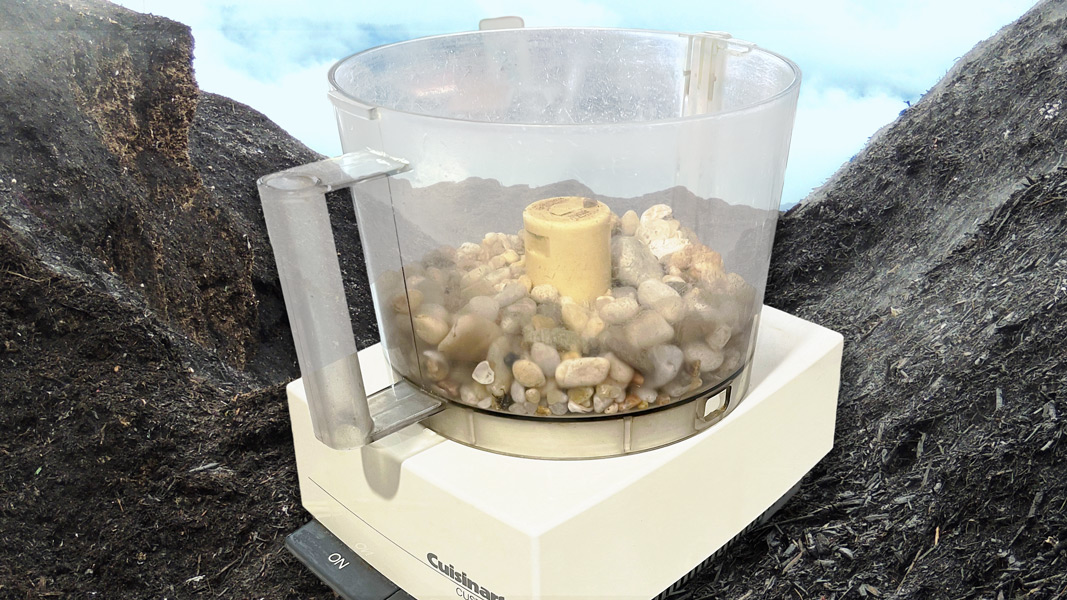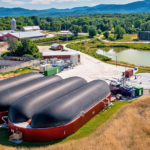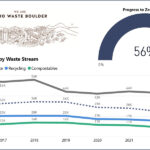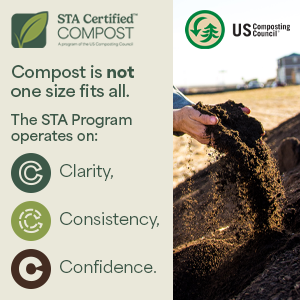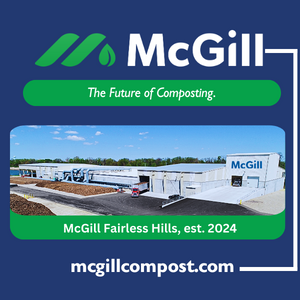Top: Photos by Sally Brown and Doug Pinkerton
 Sally Brown
Sally Brown
Enhanced rock weathering (ERW) is the new biochar. Terradot, a Silicon Valley startup, has attracted some very reputable soil scientists and financial backing (>$58 million) to save our soils and our planet by grinding up rocks and spreading the dust on fields. Much of the work of this startup is taking place in Brazil. That same Brazil where the furor over the Terra Preta (black earth) soils started. As you may remember, the key to those black soils and the enhanced fertility was char. Now char is being pushed to the side to make room for rocks.
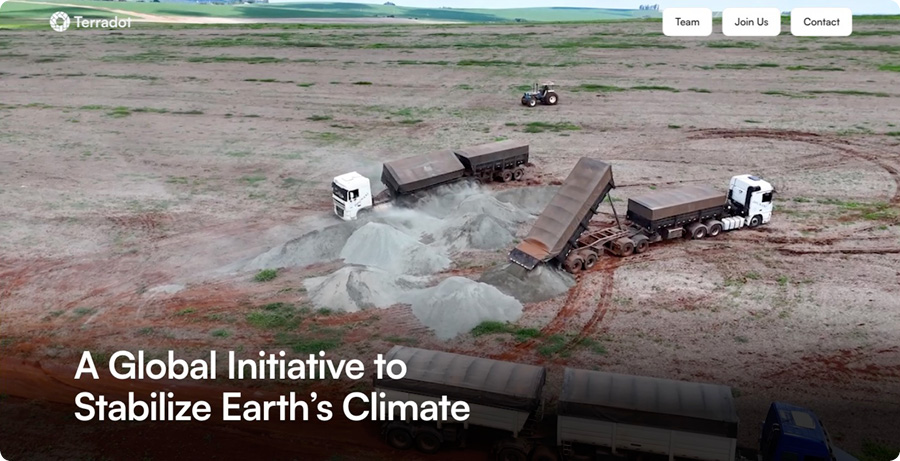
Rock dust spreading on agricultural fields in Brazil. Screen snapshot from the Terradot website home page
What is “enhanced rock weathering”? Silicate based rocks are ground into powder to decrease their particle size and increase their surface area, making them more reactive. This dust is then spread across farmers’ fields. The rock dust (with the help of rainfall) starts to chemically weather, a process that involves drawing carbon dioxide (CO2) from the atmosphere to form bicarbonates. The bicarbonates are soluble and will gradually flow through the soils to the groundwater and into the ocean. The bicarbonates will be stable in the ocean for thousands of years. Oceans are the biggest storage center for carbon on our planet and so adding more carbon to this vault is a great way to store it and stop it from entering the atmosphere.
Start With Silica
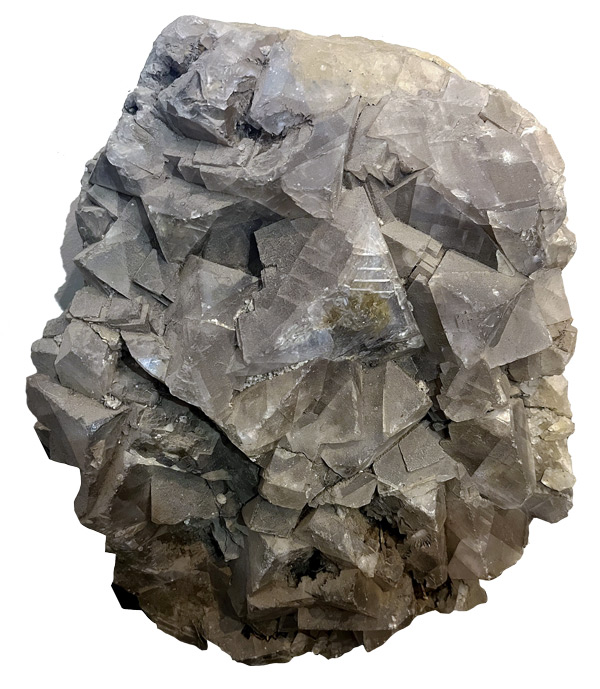
Silicate rock. Photo by Sally Brown
Your next question is likely to be “what exactly is a silicate rock?” Silica is a building block of many of the earth’s rocks. It is also a major component of the mineral portion of soils. Most soils start out as rock after all. Soils are built from rocks that are gradually broken up into smaller and smaller pieces, a process that takes thousands and thousands of years. The biggest piece from a soil scientists’ perspective is sand, with silts and clays progressively smaller in size. The basic building blocks for much of this are made from aluminum and silica. Silica tetrahedra (four sided) and aluminum octahedra (eight sided) are the Legos of soils. Over time, even the Si tetrahedra can break down. One of the ways it can break down involves CO2 from the atmosphere. Here is a sample equation that shows what I mean:
2NaAlSi3O8 + 2CO2 + 1H2O → Al2Si2O5(OH)4 + 2Na+ + 4H4SiO4 + 2HCO3–
“Ha” you say, that shows me that you know how to use the subscript feature in MS Word and not much else. Here is a translation. The equation shows that you start out with a rock that has silica in it. As that rock starts to weather (age or transform) it sucks up a CO2 molecule and some water. What comes out the other end is a different rock, two ions that go into soil solution, some silicic acid and a bicarbonate ion. The bicarbonate ion is made up of a water molecule minus one H (hydrogen) and the CO2. You’ve taken that CO2 from floating around in the air as a gas and made it into an ion that can float around in the water. According to the equation, for each unit of rock you remove one unit of CO2. You have to take the weights of each into account to get a proper conversion. Using the above equation, it takes 262 g of rock to get you 44 g of CO2 removal. Or about 6 tons of rock for each ton of CO2. That is assuming a 100% conversion efficiency.
Rock Grinding
What I just described is a naturally occurring process that does remove massive quantities of CO2 from the atmosphere every year (Zhang et al., 2021). It even has a name — the Silica Carbon Sink or SCS. Different estimates in the literature suggest that this natural process sequesters from 0.104 to 0.169 Gt (gigaton) of CO2 each year. That is the same as 104 million to 169 million tons. What Terradot is trying to do is make it work harder and faster and remove significantly more CO2 by grinding up rocks and adding them to soil. To date they have ground up 48,000 tons of rock and spread the dust over 1,800 ha of soil, according to a recent article.
This has all taken place in Brazil. Part of the reason for that is that Brazil has a relatively green energy grid. Grinding up rocks and hauling rock dust are energy intensive processes. They are likely also doing it in Brazil because it is warm and wet there. Warm and wet conditions accelerate the chemical weathering. That is a great thing for Terradot and enhanced rock weathering and a poor thing (in general terms) for soils in Brazil. In fact, the reason that the Terra Preta soils in Brazil were such a standout is that the soils in Brazil are so weathered they are exhausted. Some of us are old enough to remember the claim that exhaustion was the result of iron poor blood. Highly weathered soils have the opposite problem — too much iron and not enough of any of the other required nutrients.
The Terradot website suggests that their work will also help food systems as the dust increases resilience against drought and flooding. It states that ERW will increase yields and restore ecosystem health. The soils in Brazil could certainly use some help. What happened with Geritol — the touted remedy for iron poor blood — was that the Federal Trade Commission ruled that it was a bunch of hooey. Let’s see if the Terradot claims hold water. Just another caveat is that the reaction works better in soils that are not acidic. Not the case for most of the soils in Brazil.
In perhaps my favorite all time book series (His Dark Materials by Phillip Pullman), dust did in fact save humanity. Lyra and Will secured the flow of dust at the end of Book III and through my tears I breathed a great sigh of relief. We could all use a great sigh of relief right now. Here I looked to the scientific literature instead of fiction to see if rock dust has the same magical properties as the dust in the Pullman books. I am not questioning the claims that rock weathering removes CO2 from the atmosphere. That is a natural process. Whether or not it is realistic to accelerate it in a relevant way by grinding up rocks I’ll get to later on.
Yields And Ecosystem Health Benefits?
For the claims of increased yields and ecosystem health I found two papers that have Kate Scow as a co-author. Dr. Scow, recently retired, was a soil microbiologist at the University of California Davis. Highly respected, highly competent and a member of the recent National Academy panel on the relationship between soil health and human health. Meaning I trust her work.
In a newly published paper, Scow and her fellow authors looked at the impact of crushed rock on a range of soil properties including soil organic matter and water holding capacity (Sokol et al., 2024). The rock consisted of a mixture of meta basalt and meta-andesite with some dacite and rhyolite thrown in for flavor. My point in listing these is that grinding up rocks is not comparable to making wine. No sophisticated blending and curing. You pick the general kind of rock you want and end up with a mixture. The authors did not track transformations in the soil clays or movement of carbonates through the soil. In other words, there was no analysis of the efficacy of CO2 removal from the atmosphere via the rock dust.
Rock was applied to multiple plots at three field sites in California with the minimum application of 40 tons/ha. All of the sites were irrigated, and while not quite as warm as Brazil, the plots in California were all in the Central Valley where it is certainly hot enough for a Caipirinha for much of the year. Let’s assume that the rock dust was working as planned regarding atmospheric carbon removal. It did not work as planned for any benefits to the soil. What the authors found was that while the rock dust didn’t hurt the soil, it didn’t do anything to help it either. The mineral associated fraction of carbon and nitrogen, both critical for soil health, was lower in the rock amended plots than the controls. Microbial activity was also lower in the soil surface. Microbes are critical to organic matter transformations in the soil. The authors found a strong correlation between the decrease in mineral associated organic matter and microbial activity. Water holding capacity was also reduced with crushed rock.
The rock did increase the inorganic carbon concentrations. It could be that a portion of the CO2 that was sucked from the air turned into new kinds of rocks — carbonates. Magnesium and calcium easily precipitate with CO2 to make carbonate minerals. You likely have heard of these as limestone or dolomitic limestone. In fact, the pH in the crushed rock plots was higher, providing proof. The problem with making those types of rocks is that they easily dissolve and release the CO2 right back into the atmosphere. That is limestone in action. The authors conclude that before we let the dust fill the air across farm fields, it is important to look at long term impacts to the soils. They suggest that adding organic amendments with the dust may be the way to go.
And that brings me to the other paper with Scow as a co-author (Tautges et al, 2019). In this paper the authors compared the soil organic carbon stocks with depth for long term field plots. One set of plots had synthetic nitrogen (N), N + cover crops and finally poultry manure compost and cover crops. The poultry manure compost was applied every year at 4 tons/acre for 20 years for a total application of 80 tons. Here the authors sampled to a 2 m depth. They found that while cover crops enriched the surface carbon, they sacrificed carbon down deep with a net loss over the full depth of 13.4 tons of C/ha. With the compost there was a net gain of 21.8 tons of C/ha (80 tons of CO2). If you take that as a simple gain of 22 tons of carbon per 80 tons of compost that is a big gain. If you consider that you not only prevented a loss but added a gain and take the sum of both, that nets you 35 tons of C/ha. If you really want to be impressed you can express that in terms of CO2e, which would get you 128 tons/ha. If you want to be conservative the poultry manure compost to CO2 conversion was 1:1; if you want to be a bit more aggressive it was 1.6.
And Then There’s Compost
If you have read this Connections column before you likely know where I’m going with this.
With the use of compost you also get a very wide range of other benefits. A partial list:
- Improved soil health
- Improved soil fertility
- Increased water use efficiency (better infiltration and retention)
- Nutrient circularity
- Complete fertility (composts contain all plant nutrients)
- Higher yields and often higher plant quality
- Methane avoidance (for certain compost feedstocks)
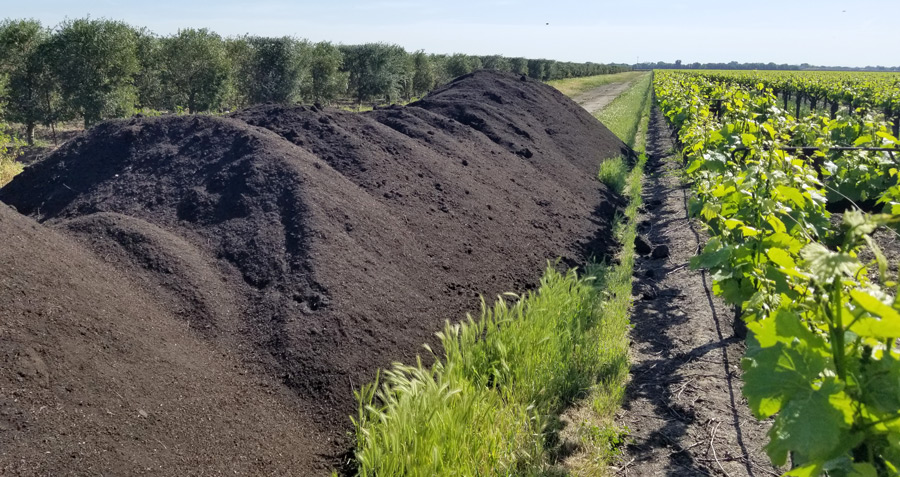
A load of compost awaiting spreading on a California vineyard. Photo courtesy Recology
The other thing that compost has are locally available feedstocks. Wherever you go there is some kind of organic waste. Often piles, creating a nuisance or public health hazard that compost magically turns into a resource. You also don’t need the right climate conditions to produce compost or to have it do its job with a soil. Compost applications help all soils from the warm tropics (partially responsible for the Tera Preta soils in Brazil) to the frigid north.
I am not saying that rock weathering doesn’t convert CO2 to bicarbonates, sequestering CO2. I am saying that this dust is far from magic. I am saying that if you want dust that saves the world, like the dust in the His Dark Materials books, you are much better off making compost than grinding up silicate minerals. The two don’t have to be mutually exclusive either. The question once again is what needs to happen for the compost pile to be recognized as the magical thing it has again and again proven to be.
Sally Brown, BioCycle Senior Advisor, is a Research Professor at the University of Washington in the College of the Environment.


